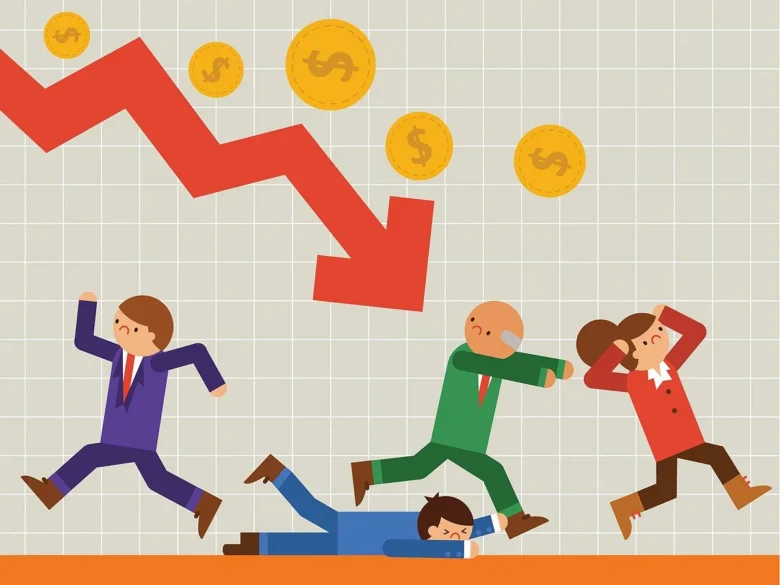Is there a real possibility that the U.S. is running out of money? With the current economic recession and high levels of the national debt, many people have expressed concerns about this potential outcome. In this article, we will explore whether or not these fears are founded in reality and what the implications may be if it turns out to be true.
The United States has long been an economic powerhouse, with its citizens enjoying some of the highest standards of living in the world. However, recent developments such as increasing government deficits and mounting public debt has raised questions about how much longer this can continue. We will analyze the causes behind America’s financial struggles and examine both sides of the argument to determine if they could eventually lead to a dire situation where the U.S. runs out of money completely.
Finally, we will look at possible solutions for avoiding such a scenario, including policies aimed at reducing spending, increasing revenue, and promoting economic growth through job creation and investment incentives. By investigating these issues thoroughly, we can gain valuable insight into one of today’s most pressing financial topics: Is it really possible that the U.S. could run out of money?
Contents
Economic Situation Of The US

Source: nationalheraldindia.com
The United States is one of the wealthiest countries in the world, but its economic situation has been precarious for some time. The economy has faced multiple challenges over the past decade, including a global recession and an uncertain recovery from it. Despite these struggles, the U.S. economy continues to grow—albeit at a slower rate than before the recession. And people in the U.S are taking advantage of the good economic situation because they can take a payday loan app like dave and not be afraid that they won’t have money to repay for it.
However, recent reports have raised concerns about whether or not the U.S. is running out of money. Various factors are contributing to this worry: increased government spending on social programs, rising healthcare costs, and declining revenues due to tax cuts. As a result, deficits and debt levels have grown significantly in recent years, leading many to wonder if the U.S. can sustain its current level of government spending.
These questions remain unanswered as experts debate how best to manage federal finances moving forward. Some argue that more aggressive fiscal policies should be implemented, while others point out the potential dangers associated with increasing taxes or cutting services. In any case, it’s clear that there are no easy solutions when it comes to managing public funds responsibly and ensuring long-term financial security for our nation.
Debt Ceiling Impacts

Source: dollarnomics
As the U.S. government continues to grapple with how to manage its finances, one important factor that must be considered is the impact of the debt ceiling. This limit on federal borrowing was put in place by Congress as a way to control spending and prevent an unsustainable level of debt from accumulating. As it stands, the current debt ceiling is set at $22 trillion—a number that has been steadily increasing over time.
The consequences of breaching this limit could be severe. For example, if the U.S. were unable to pay its bills due to hitting the debt ceiling, it would likely lead to widespread economic damage both domestically and globally. Additionally, interest rates might rise, making it more difficult for businesses and individuals alike to get loans or other forms of credit.
To make matters worse, reaching the debt ceiling does not immediately mean defaulting on payments; rather, it can result in delays or disruptions in certain services such as Social Security benefits or military payrolls. Here are some potential impacts of exceeding the federal government’s borrowing limits:
- Reduced access to credit markets
- Higher interest rates
- Delayed payments for social security benefits
- Reduction in domestic programs and services
- Lower consumer confidence
It’s clear that raising or even eliminating the existing debt ceiling comes with serious risks and should only be done after careful consideration and consultation with experts. Finding a sustainable solution will require a compromise between various stakeholders while keeping long-term fiscal stability top-of-mind.
Effects On The US Dollar

Source: dollargenie.com
In addition to the potential impacts of breaching the debt ceiling, there is also a risk that it could adversely affect the U.S. dollar. As the currency of one of the world’s largest economies, any instability or uncertainty in its value can have far-reaching consequences. If investors lose confidence in the U.S. government’s ability to manage its finances and meet its obligations, they may move their investments elsewhere, causing a devaluation of the dollar. This would make imports more expensive for American consumers and businesses alike while pushing up interest rates on loans.
Furthermore, if the debt crisis leads to long-term fiscal instability with no resolution in sight, foreign governments may be less likely to purchase Treasury bonds denominated in U.S. dollars—which helps finance federal spending and drives demand for the currency. In turn, this could push down bond prices and lead to greater volatility within global financial markets.
All these factors point to an urgent need for action from policymakers in order to keep America’s finances stable and secure over time. Without effective policy changes aimed at reducing national debt levels and restoring investor confidence, we run the risk of seeing our currency decline further against other major currencies, such as the Euro or Japanese Yen—potentially leading to significant economic hardship both domestically and internationally.
Potential Solutions

Source: online.imt-pm.com
To address the issue of U.S. debt, policymakers must take a multi-faceted approach. Achieving long-term fiscal stability will require both short and long-term solutions that tackle the root causes of our current state. This means balancing revenue generation with spending cuts, as well as reforming certain aspects of the tax code to ensure that wealthier individuals are paying their fair share.
At the same time, it’s also important for Congress to reduce budget deficits by restraining discretionary spending and making targeted investments in sectors such as infrastructure and job creation programs. Additionally, any efforts to reduce public debt should be accompanied by measures that bolster investor confidence—such as increasing transparency regarding government financial activities or even establishing an independent commission tasked with monitoring federal borrowing levels.
Ultimately, restoring America’s economic health requires a unified effort on behalf of all Americans: from citizens who need to make responsible choices when voting in elections; to businesses who can help stimulate growth through investment; to politicians who have the power to craft effective policy changes. With concerted action at every level, we can put the country back on track toward sustainable prosperity.
Conclusion
In conclusion, the U.S. is running out of money, and it is a very real problem. The debt ceiling has put a strain on the American economy and weakened the U.S. dollar. This could potentially lead to higher prices for goods and services, as well as more difficult access to credit. To help alleviate this issue, Congress needs to come up with solutions that will increase revenue while also reducing spending in certain areas. Additionally, there should be incentives for businesses and individuals to invest in America’s future. With these efforts combined, we can ensure that our country remains strong and prosperous despite any financial challenges it may face in the future.
